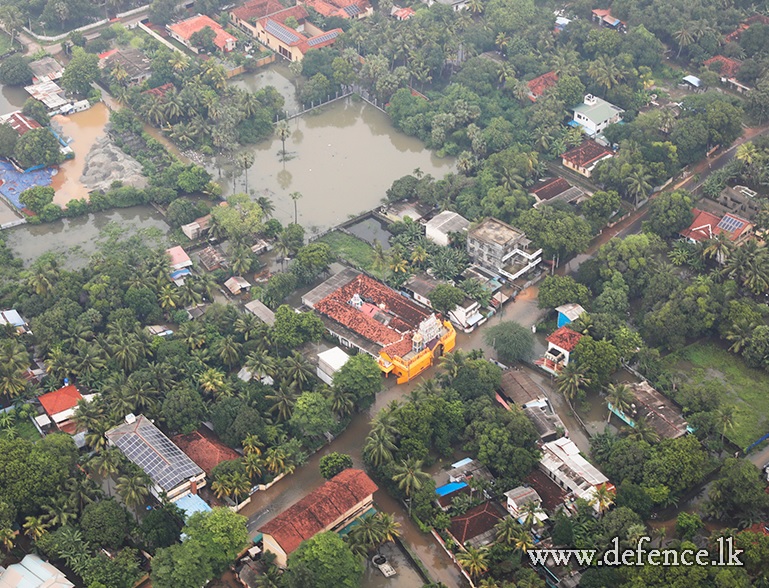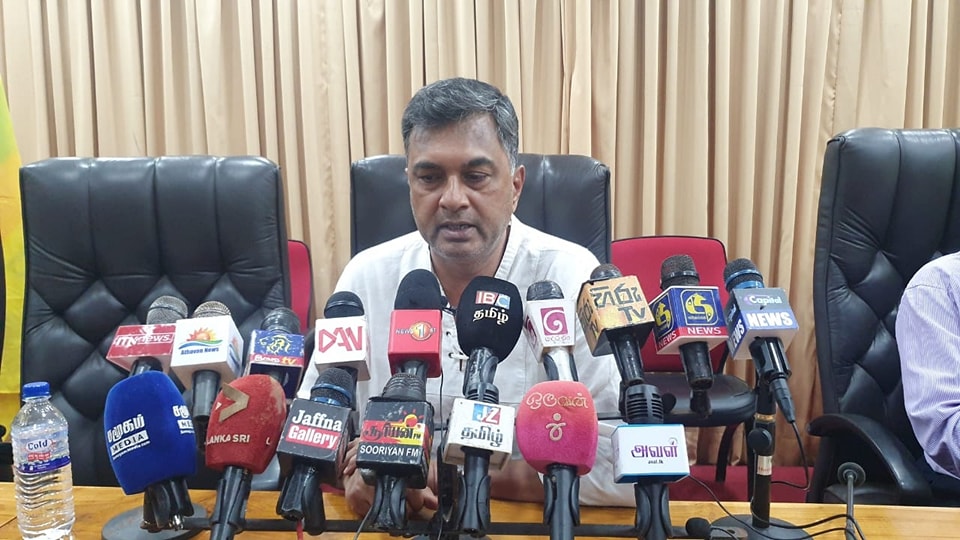
Sri Lanka's defence secretary, accused war criminal Sampath Thuyacontha, visited Jaffna on Thursday, as he oversaw military relief efforts amidst floods that have devastated the island.


Thuyacontha visited various areas in the regions and received briefs from the occupying Sri Lankan military in the peninsula.

In a press conference with journalists, he went was questioned on the occupation and said that lands in the North-East are held for "security purposes," claiming that 2700 acres will be released from Jaffna "soon".
"There are 2,700 acres of land to be released in the Jaffna district. We are considering releasing these lands from the security forces and returning them to the landowners. In the future, we will make a proper assessment and take steps to release the lands," he told journalists. "We have taken these decisions based on security reasons."
He says that the government led by Anura Kumara Dissanayake has already released "some roads" and will consider the welfare of the communities when releasing the other parcel of land. Despite assurances from Thuyacontha, the Sri Lankan military along with the archaeological department and agriculture department continues to hold swathes of land in the North-East.
Recently Tamil residents of Keppapulavu presented a petition to Sri Lankan Prime Minister Harini Amarasuriya, demanding the release of lands currently under military occupation. The petition was handed over during the Prime Minister’s visit to an election campaign rally held by the National People’s Power (NPP) at Puthukkudiyirippu. The Sri Lankan military continues to occupy swathes of land belonging to Tamils in the North-East. Neither the Prime Minister nor the government responded to these requests for the release of lands.
Although almost 15 years have passed since the end of the armed conflict the Sri Lankan military continues to control and occupy vast swathes of land in the Tamil homeland, forcing families to remain displaced. According to the Jaffna-based organisation, Adayaalam Center for Policy Research (ACPR), 30,000 acres remain under occupation in Mullaitivu.
Thuyacontha was the Wing Commander of the No 09 squadron, a helicopter gunship squadron that conducted nearly 400 missions during the Mullivaikkal genocide in 2009. The genocide, which concluded in May 2009, saw tens of thousands of Tamil civilians massacred by the Sri Lankan military who indiscriminately bombed hospitals and government declared ‘No Fire Zones’.
“We caused chaos along their frontline in the Vanni theatre,” boasted Thuyacontha in an interview after the atrocities. He said he had personally been involved in about 60 missions during the final phase of the armed conflict alone. His squadron fired a total of 19,762 80 mm rockets, Thuyacontha said. In addition, they were armed with 23 mm twin barrel systems 12.7 mm Gatlin guns, 30 mm cannons, and bombs weight up to 250 kg. Two pairs of Mi-24s helicopters alone “could have caused massive devastation,” he said.
In particular, Thuyacontha spoke of his role in the Battle of Puthukkudiyiruppu in April 2009. "We flew many sorties day and night targeting the enemy," he admitted. "It was like 31st night – full of fireworks."

